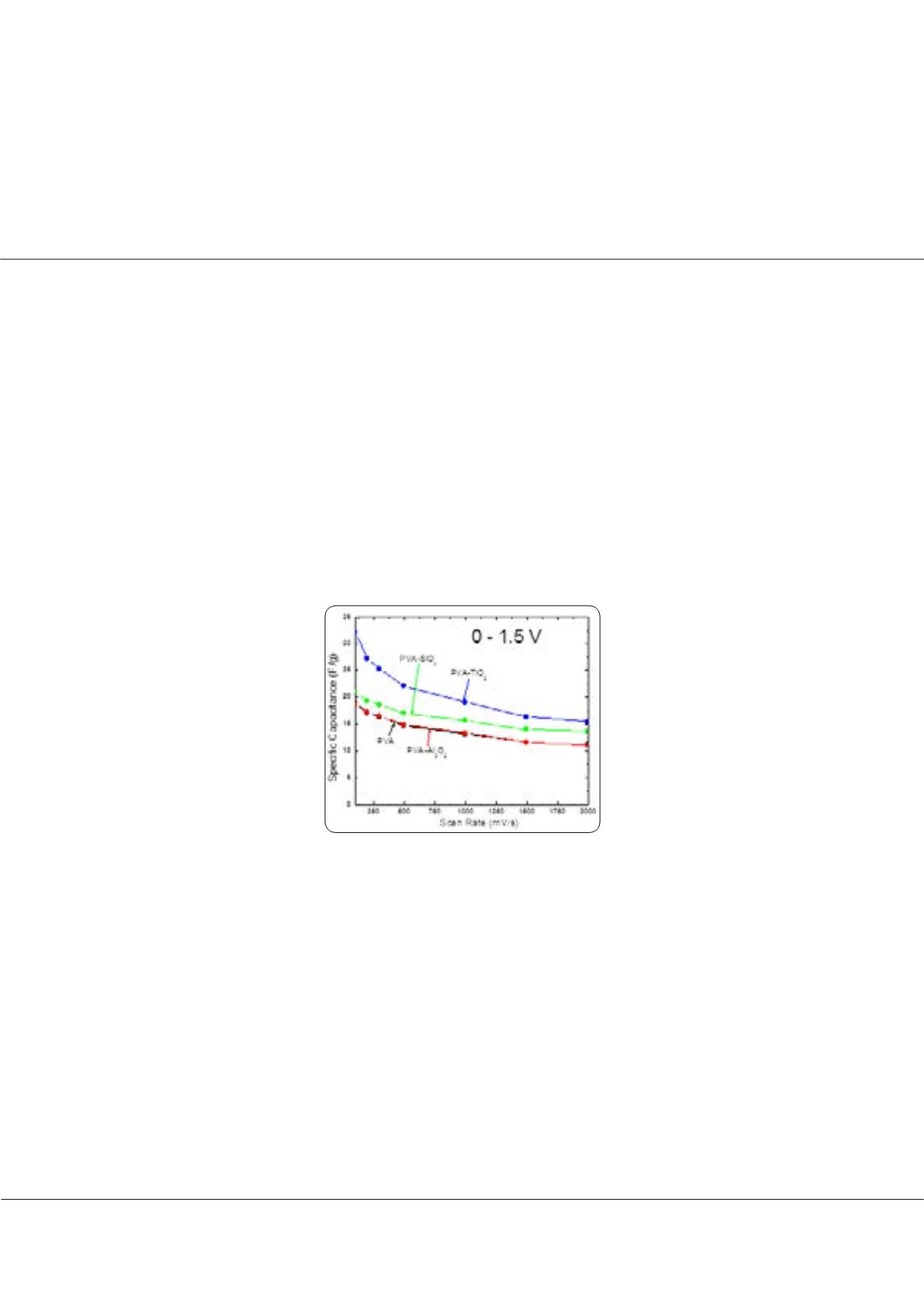

Page 106
Notes:
conferenceseries
.com
Volume 7
Biosensors Journal
ISSN: 2090-4967
Electrochemistry 2018
June 11-12, 2018
June 11-12, 2018 | Rome, Italy
4
th
International Conference on
Electrochemistry
Flexible poly(vinyl alcohol)-ceramic composite separators for supercapacitor applications
Sang Hern Kim
Hanbat National University, South Korea
E
lectrochemical characterization was conducted on poly(vinyl alcohol) (PVA)-ceramic composite (PCC) separators for
supercapacitor applications. The PCC separators were fabricated by mixing various ceramic particles including aluminum
oxide (Al
2
O
3
), silicon dioxide (SiO
2
), and titanium dioxide (TiO
2
) into a PVA aqueous solution. These ceramic particles help
to create amorphous regions in the crystalline structure of the polymer matrix to increase the ionic conductivity of PVA.
Supercapacitors were assembled using PCC separators with symmetric activated carbon electrodes and electrochemical
characterization showed enhanced specific capacitance, rate capability, cycle life, and ionic conductivity. Supercapacitors using
the PVA-TiO
2
composite separator showed particularly good electrochemical performance with a 14.4% specific capacitance
increase over supercapacitors using the bare PVA separator after 1000 cycles. With regards to safety, PVA becomes plasticized
when immersed in 6 M KOH aqueous solution, thus there was no appreciable loss in tear resistance when the ceramic particles
were added to PVA. Thus, the enhanced electrochemical properties can be attained without reduction in safety making the
addition of ceramic nanoparticles to PVA separators a cost-effective strategy for increasing the ionic conductivity of separator
materials for supercapacitor applications.
Figure 1:
The plot of specific capacitance versus scan rate for various PVA-ceramic composite separators
Biography
Sang Hern Kim has his expertise in polymer synthesis. He synthesized novel polymers and tried to apply them to electro-material and other fields.
shkim@hanbat.ac.krSang Hern Kim, Biosens J 2018, Volume 7
DOI: 10.4172/2090-4967-C1-003
















